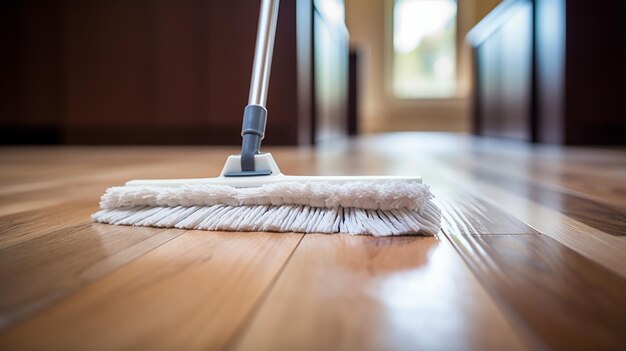Restoring hardwood floors can breathe new life into your living space, adding value and beauty to your home. However, understanding the intricate process involved in hardwood floor restoration is crucial to achieving the best results. Knowing the steps helps ensure you handle your floors carefully, leading to long-lasting and impressive outcomes.
The journey to beautifully restored hardwood floors begins with properly assessing their current condition. This step allows us to identify any major areas needing repair and determine the best approach for restoration. Once the assessment is complete, the preparation phase is crucial. This involves cleaning, removing furniture, and ensuring the area is ready for the sanding and sealing process. Each of these phases requires attention to detail to ensure your floors are delicately and effectively restored.
By following a structured approach to sanding and sealing, we can transform worn-out floors into stunning features of your home. After the restoration is complete, it’s equally important to follow post-restoration care and maintenance practices to preserve the beauty and integrity of your newly restored hardwood floors.
This comprehensive guide will walk you through each of these essential phases, helping you understand what to expect and how to achieve the best results for your hardwood floor restoration project.
Assessing the Condition of Your Hardwood Floors
Before beginning any restoration process, it’s important to assess the condition of your hardwood floors. This step helps identify the specific issues that need addressing and determines the extent of the restoration required. Check for common problems such as scratches, dents, stains, and areas where the finish has worn off. These issues can impact the overall appearance and structural integrity of your floors.
Walk across the floor and look for uneven spots or areas that feel spongy, indicating potential damage beneath the surface. Inspecting the floor under different lighting conditions can also help you spot issues that might not be immediately visible. By understanding the current state of your hardwood floors, you can plan an effective restoration strategy that targets the right areas and ensures a successful outcome.
Preparing the Area for Restoration
Preparing the area is a crucial step in the hardwood floor restoration process. Start by clearing the room of all furniture, rugs, and any other items that could obstruct the work. This provides a clean, open space for the restoration process and prevents damage to your belongings.
Next, thoroughly clean the floor to remove dust, dirt, and debris. Use a vacuum with a soft brush attachment to ensure all particles are removed from the floor’s surface and crevices. Cover nearby doorways and vents with plastic sheeting to contain dust produced during the sanding process. Also, ensure proper ventilation by opening windows and using fans if necessary.
By preparing the area effectively, you set the stage for a smooth restoration process, allowing for better results and ensuring the longevity of your hardwood floors.
The Steps Involved in Hardwood Floor Sanding and Sealing
Restoring hardwood floors involves several critical steps that ensure the surface is smooth and well-protected. First, we start by sanding the floors. Sanding removes the old finish and any deep scratches or stains, revealing the fresh wood underneath. It requires different grades of sandpaper, starting with a coarse grit and gradually moving to finer grits for a polished finish. This process creates a clean slate for applying new finishes and ensures that the floors are even and smooth.
After sanding, we clean the floor thoroughly to remove all dust and debris. The next step is sealing the wood. Applying a sealant protects the wood from moisture and wear, enhancing its durability. We apply the sealant evenly across the surface, allowing it to penetrate and bond with the wood fibers. Once the sealant dries, we often follow with a topcoat, such as polyurethane, for added protection and shine. This multi-step process ensures that your hardwood floors are beautiful and well-protected from future damage.
Post-Restoration Care and Maintenance Tips
Once your hardwood floors are restored, proper care and maintenance are crucial to preserving their appearance and longevity. One important tip is to avoid using harsh chemicals or abrasive cleaning tools, as these can damage the finish. Instead, use a soft, microfiber mop and a cleaner specifically designed for hardwood floors. Regularly sweep or vacuum to remove dirt and prevent scratches.
Additionally, consider placing rugs or mats in high-traffic areas to protect your floors from excessive wear. Be mindful of moisture, as water can damage hardwood. Wipe up spills immediately and use a humidifier in dry seasons to maintain optimal humidity levels. Schedule periodic professional cleanings to maintain the finish and address any minor issues before they become significant problems. By following these simple steps, you can keep your restored hardwood floors looking beautiful for years.
Final Thoughts
Restoring hardwood floors is a rewarding process that enhances the beauty and value of your home. From assessing the condition and preparing the area to sanding, sealing, and ongoing maintenance, each step contributes to the longevity and appearance of your floors. Proper care and attention to detail can transform worn or damaged hardwood into a stunning feature of your home.
At Monster Clean, we specialize in providing top-tier hardwood floor restoration services. Our experienced team is equipped with the knowledge and tools to handle every aspect of the restoration process. By choosing us, you ensure that your floors receive the best care possible. Contact Monster Clean today at (757) 523-1175 to schedule a consultation and let us help you restore your hardwood floors to their original splendor.




